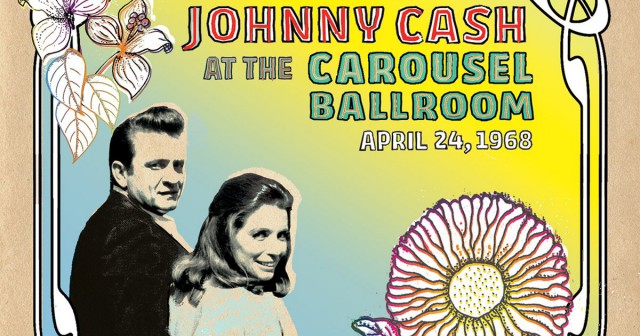News
Johnny Cash at the Carousel Ballroom, April 24, 1968
A new Johnny Cash live album, recorded in San Francisco in 1968 by famed taper and audio engineer Owsley Stanley, is set for release September 24th via the Owsley Stanley Foundation and Renew Records/BMG. Johnny Cash, At the Carousel Ballroom, April 24th, 1968 finds the country legend performing in the heart of Haight-Ashbury, and the performance has been teased with Cash’s rendition of “I’m Going to Memphis.”
Recorded just days before the release of his best-known live album, Live at Folsom Prison, Cash historian Mark Stielper tells Rolling Stone in an email that the show captures the musician “on the brink, the very cusp, of his Ascendancy… the last picture before he was a prophet and a pilgrim and mover of mountains and a friend of presidents and the voice of God.” It also found him, already a well-known and celebrated country act, in the thick of the late-Sixties counter culture. “In some ways, going into that Grateful Dead-owned ‘psychedelic total-environment dance hall,’ in the middle of San Francisco’s Haight-Ashbury counter-culture, was as brave an act as locking himself in with maximum-security prisoners two hours away,” Stielper added.
Perhaps owing to the setting, Cash’s set diverged from his usual one. The track list features two Bob Dylan covers, as well as performances of songs from his own catalogue that were overlooked at the time, like, “The Ballad of Ira Hayes.” Still, as Stielper notes, Cash definitely still had “prison songs on his brain,” and the show opens with “Cocaine Blues,” “Long Black Veil” and the “Going to Memphis.”
“‘Going to Memphis,’ which John first recorded in 1959, is an epochal black blues chain-gang chant, actually collected on the tape recorder of the preeminent musicologist, Alan Lomax, inside a Mississippi prison, in the 1940s,” Stielper says. “The song harkens back to a not-so-distant past of cruel, enforced labor and punishment in the American south. Cash’s career had been in a quiet period, and as he stands here, on the precipice of his greatest moments, ‘Going to Memphis’ reminds us of why he became, and continues to be, our ‘most enduring musical conscience.’”
The way At the Carousel Ballroom was recorded by Stanley (affectionately known as “Bear”) also gives it a character unique from Folsom and San Quentin. While the latter two have a raw immediacy tied to the fact that they were recorded in spaces not equipped to capture pristine audio, Carousel was recorded using techniques Stanley developed while working as the in-house engineer at the venue.
“Bear’s recording gives us an entirely different perspective on Johnny’s live sound during this creative peak, and is probably the closest to what it actually sounded like to be in the audience for a Johnny Cash show in 1968,” says Stanley’s son, Starfinder Stanley. “There’s an idiosyncrasy to this recording; on every other Johnny Cash record you’ve ever heard, Johnny is centered in the stereo soundstage. But on this one, Johnny is entirely on the right channel, and the Tennessee Three are all on the left. That’s a bit weird until your brain adjusts, but you quickly realize that you’ve been set right between Johnny and his band.”
At the Carousel Ballroom will be released on CD and as a double-LP vinyl set. It’ll come with a booklet featuring new essays by Cash’s son, John Carter Cash, Starfinder Stanley, the Grateful Dead’s Bob Weir and Widespread Panic’s Dave Schools, plus new art by Susan Archie, and a reproduction of the original concert poster by Steve Catron.
Live at the Carousel Ballroom tracklist:
- Cocaine Blues
- Long Black Veil
- Orange Blossom Special (CD and Digital only)
- Going to Memphis
- The Ballad of Ira Hayes
- Rock Island Line
- Guess Things Happen That Way
- One Too Many Mornings
- Don’t Think Twice, It’s All Right
- Give My Love to Rose
- Green, Green Grass of Home
- Old Apache Squaw
- Lorena
- Forty Shades of Green
- Bad News
- Jackson
- Tall Lover Man
- June’s Song Introduction
- Wildwood Flower
- Foggy Mountain Top
- This Land Is Your Land
- Wabash Cannonball
- Worried Man Blues
- Long Legged Guitar Pickin’ Man
- Ring of Fire
- Big River
- Don’t Take Your Guns to Town
- I Walk the Line
(source Rolling Stone)

